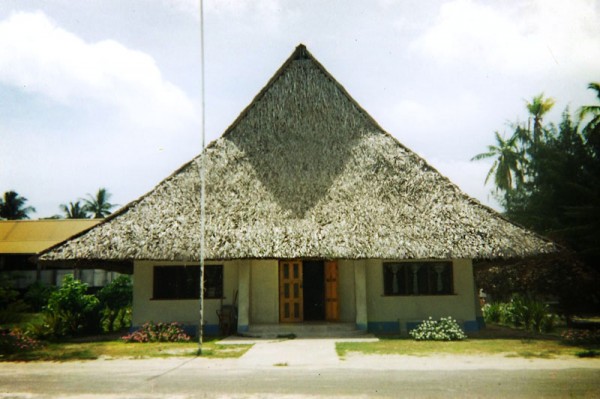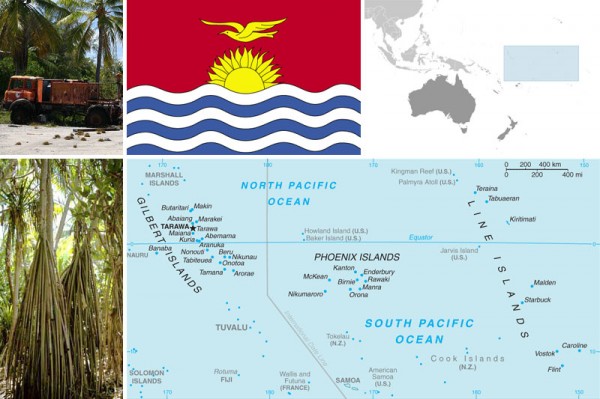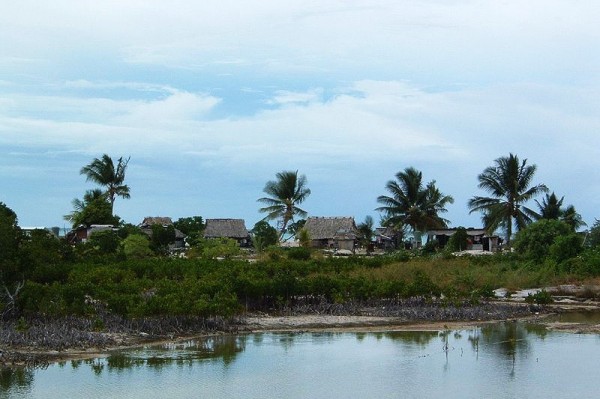
Inspiration for our Global Gingerbread Contest: the Former Kiribati House of Assembly. Photo by Roisterer
Every country has a distinct personality. Think of Kiribati as a distant relative – one you might not have even known existed.
And I don’t mean your grouchy Aunt Lola.
Nope. I mean an upbeat and exotic cousin – one that somehow also manages to exude simplicity and thrift. At her most basic, Kiribati’s a hodge podge of 33 teeny weeny coral atolls in Oceania. Translation? Kiribati’s landmass is so small that “island” is not an appropriate way to describe her situation (although the grouping is officially called the Kiribati Islands – confused yet?).
To be honest, I had never heard of Kiribati before GTA. It only took a few internet searches to realize I was not alone. Most of the information about Kiribati was sparse and – as I was to learn – completely wrong. The little good information I could dig up was found in World Cookbook for Students and on a neat web site called 12 Months in Kiribati (about a guy and gal volunteering in Kiribati for – you guessed it – twelve months. They site is mid-process, so you can jump in and enjoy it as their adventures unfold).
I contacted the authors, Pete and Nicky Holden for more information. They were kind to send a few emails to help me wrap my brain around the food of Kiribati.
At the end of the day, if I had to sum Kiribati’s cuisine up with one word, it would be FISH.
Lots and lots of fish. Nicky says the most popular seafood is: “lobster,yellowfin or skipjack tuna, but also other fish (fried, boiled, battered and deep fried, baked… anything you can think of). […] Kiribati is a coral atoll (not volcanic, fertile soil like most of the Pacific), so not much grows here. Coconut, breadfruit treas and pandanus are the main things that grow. Things like pumpkin, cabbage and cherry tomatoes have been introduced, so they grow too. […] little bananas are everywhere.”
She adds that curry powder, rice and canned goods – such as corned beef (something that also showed up nearby Fiji’s menu) – are all popular, although in each case they’re imports. Exotic items like ginger, garlic, and chili peppers are all imported and not used in daily cooking. A basic meal might include fish or lobster with coconut milk & curry powder [Recipe], finished with sweet pumpkin and pandan leaves [Recipe]. Boiling and underground roasting is kept plain and simple.
It’s fun getting to know a new country. Even if she’s been there all along, just waiting for someone to notice.
What are your favorite foods from this region?





22 Comments